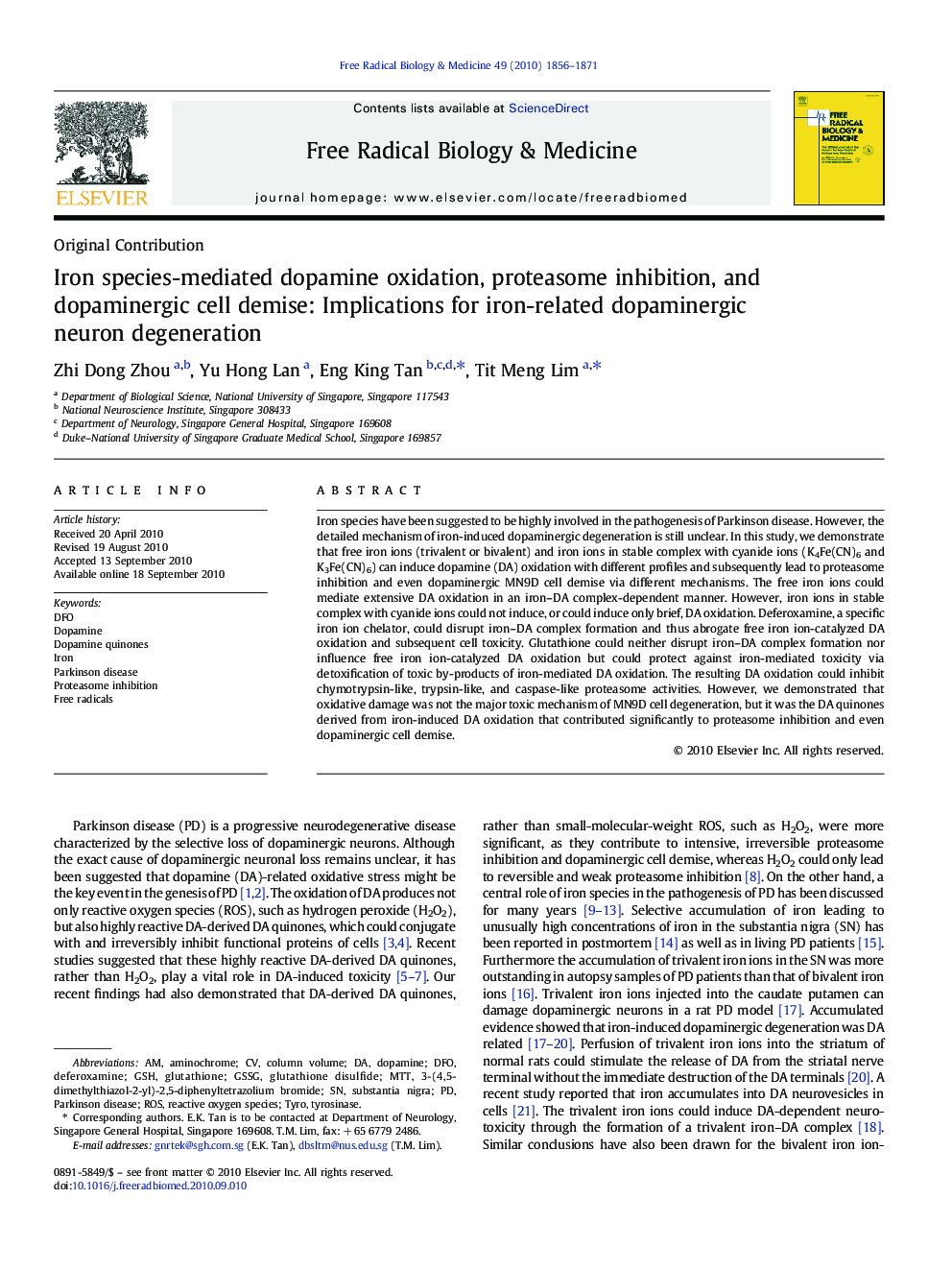| Article ID | Journal | Published Year | Pages | File Type |
|---|---|---|---|---|
| 1909750 | Free Radical Biology and Medicine | 2010 | 16 Pages |
Iron species have been suggested to be highly involved in the pathogenesis of Parkinson disease. However, the detailed mechanism of iron-induced dopaminergic degeneration is still unclear. In this study, we demonstrate that free iron ions (trivalent or bivalent) and iron ions in stable complex with cyanide ions (K4Fe(CN)6 and K3Fe(CN)6) can induce dopamine (DA) oxidation with different profiles and subsequently lead to proteasome inhibition and even dopaminergic MN9D cell demise via different mechanisms. The free iron ions could mediate extensive DA oxidation in an iron–DA complex-dependent manner. However, iron ions in stable complex with cyanide ions could not induce, or could induce only brief, DA oxidation. Deferoxamine, a specific iron ion chelator, could disrupt iron–DA complex formation and thus abrogate free iron ion-catalyzed DA oxidation and subsequent cell toxicity. Glutathione could neither disrupt iron–DA complex formation nor influence free iron ion-catalyzed DA oxidation but could protect against iron-mediated toxicity via detoxification of toxic by-products of iron-mediated DA oxidation. The resulting DA oxidation could inhibit chymotrypsin-like, trypsin-like, and caspase-like proteasome activities. However, we demonstrated that oxidative damage was not the major toxic mechanism of MN9D cell degeneration, but it was the DA quinones derived from iron-induced DA oxidation that contributed significantly to proteasome inhibition and even dopaminergic cell demise.
